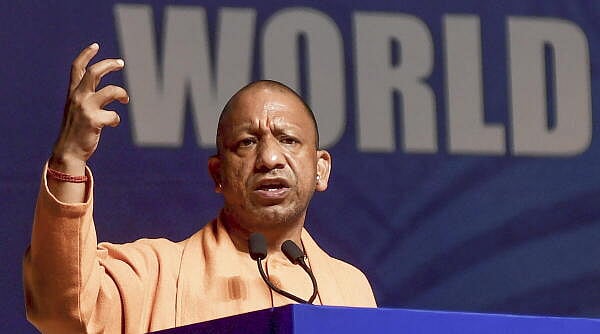
Uttar Pradesh Chief Minister Yogi Adityanath addresses the "World Hindu Economic Fourm" in Mumbai, Saturday, Dec. 14, 2024.
PTI
Mumbai: The Hindu civilization has neither imposed itself on others nor wielded power through coercion, said Uttar Pradesh Chief Minister Yogi Adityanath.
“Shri Ram won Kishkindha but gifted it to Sugreev, and after defeating Ravana, he installed Vibhishana as king of Lanka,” Adityanath said addressing the World Hindu Economic Forum (WHEF) in Mumbai.
He noted the unique privilege of being born in India, a land that has long exemplified the ideals of Ram Rajya — a governance model devoid of natural, social, and intellectual sorrows.
Drawing from scriptures, Adityanath explained that India has always been home to the four purusharthas — Dharma, Artha, Kama, and Moksha — and has cared for global well-being.
Yogi underscored India’s economic legacy, pointing out that it accounted for 40% of global GDP on average from the 1st to the 15th century CE. He contrasted this with the economic decline during Islamic invasions and British colonial rule. However, we have witnessed a resurgence of Bharat’s economic strength under Prime Minister Narendra Modi’s leadership.
“From being the 10th or 11th largest economy a decade ago, we are now the fifth-largest and are on track to become the third-largest by 2027,” he said. He highlighted the government’s dual commitment to heritage and development, noting that “economic power cannot be achieved by neglecting our roots.”
Adityanath also took pride in Uttar Pradesh's economic turnaround.
“The state’s GDP has soared from Rs 12 lakh crore to Rs 32 lakh crore during his tenure, and its per capita income, which was once a third of the national average, is now approaching parity. The One District One Product (ODOP) scheme, which promotes local industries like Bhadohi carpets and Moradabad brassware, has boosted exports to Rs 2 lakh crore annually,” he said.
The Chief Minister highlighted the transformation of UP’s tourism and infrastructure sectors.
“Before 2017, Ayodhya had power for only four hours a day, and Kashi welcomed just 50 lakh visitors annually. Today, Ayodhya boasts four-lane roads, improved rail connectivity, an international airport, and over one lakh daily visitors, while Kashi attracts 16 crore pilgrims annually, benefiting the local economy immensely. UP’s pilgrimage sites, including Chitrakoot and Goswami Tulsidas’s birthplace, are undergoing significant renovations under the Chief Minister’s tourism scheme. The upcoming Mahakumbh in Prayagraj, expected to draw 40 crore devotees, symbolizes the state’s ability to merge tradition with modernity and boost the economy in the process.”